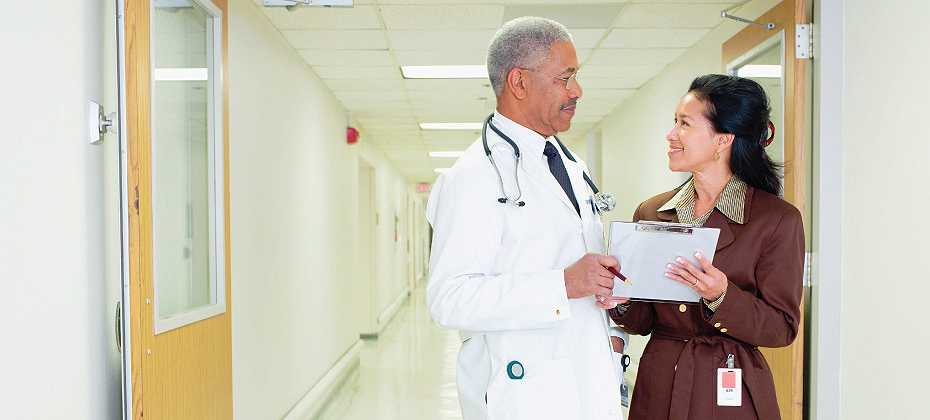
Healthcare isn’t known for its consumer-friendly payment processes and trails behind other service sectors when it comes to matching consumer preferences for convenience, choice and control. Is healthcare about to change and adjust to patient-centered payments?
Healthcare still gets the most votes as the industry that makes payments the hardest, but it’s certainly evolving. In large part, this is a result of the pandemic. Providers were forced to modernize processes and embrace contactless technology that consumers are familiar with, from their purchasing experiences in retail, hospitality and banking. Consumer expectations for better payment tools were already there – the pandemic demanded the experience met the expectations.
However, patient-centered payments is more than simply catering to consumer preferences. The quality of the healthcare payment experience can affect how and when patients receive care. If patients are worried about managing medical bills alongside their other household financial responsibilities, they may be tempted to delay or forego care. If making payments is time-consuming, they may put off dealing with bills. If their provider doesn’t offer convenient tools to help with financing, payment plans and mobile payments, patients may jump ship to a provider that does. Providers will need to overhaul their existing payment system and give consumers what they need or risk losing revenue and patient loyalty.
So, where are the opportunities for providers to deliver a more patient-friendly payment experience? Experian Health’s State of Patient Access 2.0 survey showed that patients are looking for clear, transparent healthcare pricing, payment plans and support, as well as faster ways to pay. Simplifying the patient payment journey is key. Here are six ways providers can make healthcare payments easier and faster in 2022.
-
Think like a consumer
It’s likely consumerization of healthcare payments will take place in 2022. Providers must put themselves in the patients’ shoes and imagine the ideal payment experience – fast, flexible and secure. Jason Considine, Senior VP at Experian Health, says providers are already seeing the benefits of a digital-first approach that gives patients a variety of payment options. He notes, “In one of our surveys last year, 93% of providers said improving the patient experience is a top priority for them. We’re aware of the need to change and modernize payments.”Experian Health’s Patient Payment Solutions help providers simplify the patient’s financial journey with self-service, mobile-optimized payment options. This allows consumers to manage their healthcare payments as easily as they pay for groceries.
-
Give patients more mobile payment options
As more health services are delivered in retail health clinics, such as CVS and Walgreens, providers must offer the same convenient digital payment options to remain competitive. More than half of consumers say the pandemic affected how they pay for healthcare. Contactless payments, mobile wallets and online portals have become popular choices. Peer-to-peer payments such as PayPal, Venmo and Google Pay also saw increases in usage in 2021. Forward-thinking providers are offering mobile payment solutions with tools such as Patient Financial Advisor, which allows patients to see estimated cost breakdowns and take advantage of payment plans.
-
Provide a compassionate patient experience with automated reminders and prompts
Navigating healthcare payments can be stressful for patients. As a result, they’re more likely to choose a provider that offers a compassionate experience. An integrated payment solution can act as a “financial concierge” for patients, guiding them through the payment experience with appropriate prompts and reminders, through their preferred communication channels. Patient Outreach solutions help patients stay organized with timely bill reminders, self-pay options and automated text and voice messages. Consumer data supports these tools by giving providers insights about a patient’s ability to pay, so they can engage in supportive financial conversations to help the patient decide on their next step.
-
Offer transparent pricing and upfront estimates
Experian Health’s State of Patient Access 2.0 survey showed that price transparency had improved considerably between 2020 and 2021, and remains important to consumers. Demand for healthcare price transparency will continue to grow, so providers must keep pace with developments. Giving patients an accurate cost breakdown straight to their mobile device means they can pay faster and more efficiently. Patient Payment Estimates and Patient Financial Advisor work together to help patients understand their financial responsibility. This can help them plan for upcoming bills and pay immediately if they choose. Patients get a pre-service, personalized pricing estimate based on real-time insurance status, payer contracted rates and provider pricing.
-
Use data to prescribe the right financial pathway
Not all patients are able to clear their entire bill in one payment. Personalized payment plans are an ideal way to help patients manage their balances and apply for charity assistance if necessary. PatientSimple is a consumer-friendly self-service portal that allows patients to generate pricing estimates, figure out pricing plans, and store cards securely on file, all in one place. Not only does this eliminate much of the confusion and frustration that causes negative healthcare experiences, but it also helps increase patient payments and reduce providers’ time and cost to collect.
-
Run repeated coverage checks to give patients financial certainty
Jason Considine notes that “patient populations shifted dramatically during the pandemic, with many individuals losing jobs, finding new jobs, and moving around the country. Their ability to pay has also shifted, so providers are going to need to adopt tools and technologies that help them validate and understand each patient’s insurance coverage.” Solutions like Coverage Discovery can help providers run checks throughout the entire patient journey to find missing or forgotten coverage. This gives patients certainty that their bills are covered and helps providers collect faster. Other tools, such as Collections Optimization Manager, can help providers adopt a targeted collections strategy and segment patient accounts based on propensity to pay.
Ultimately, getting paid faster comes down to creating the best possible patient payment experience. The more compassionate, convenient and flexible this experience, the easier it will be for patients to pay and the more likely it will be that bills are settled in full. Find out more about how Experian Health’s patient-centered payments solutions can help providers increase patient collections in 2022.


